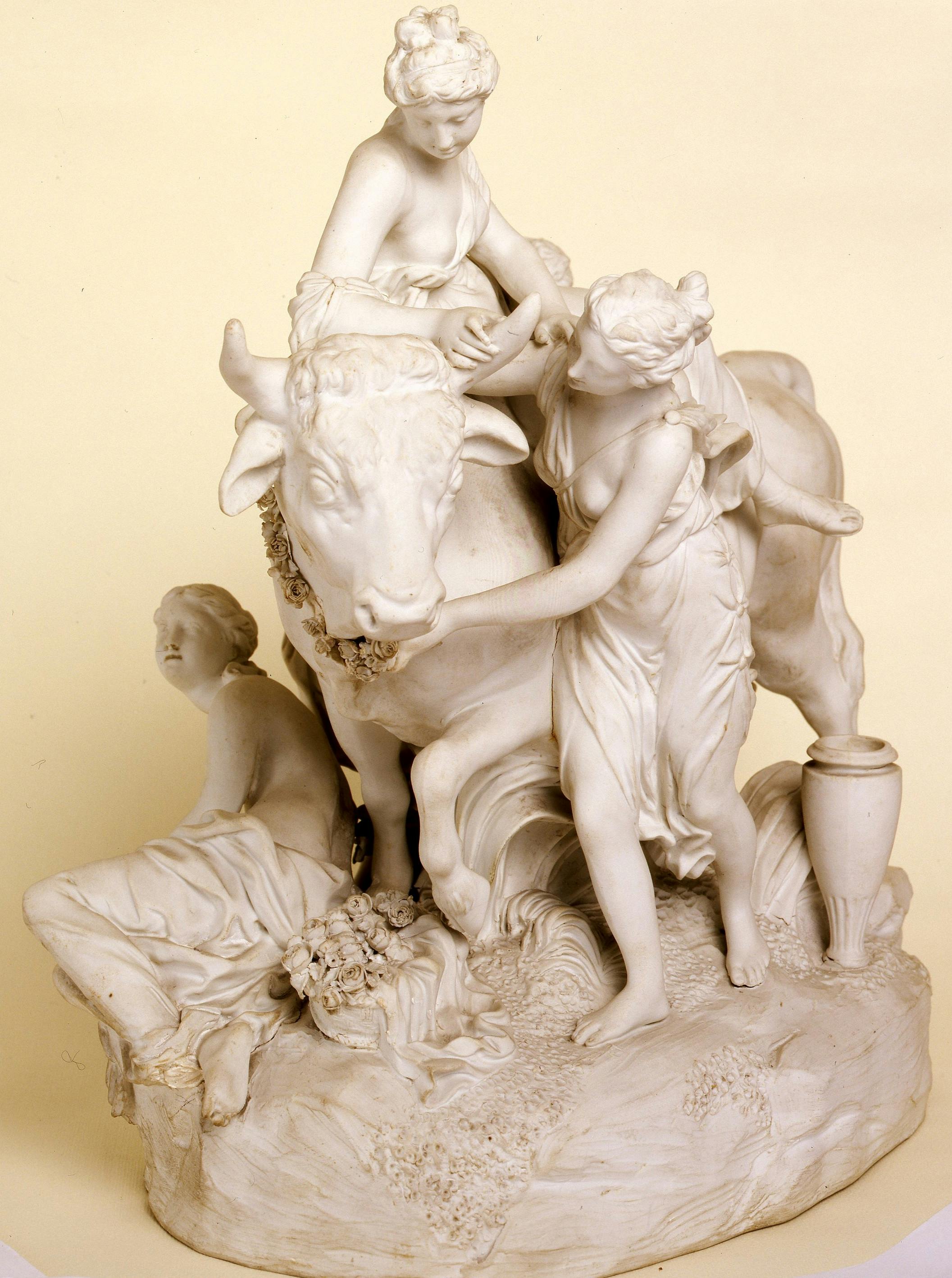The Rape of Europa
Anton Grassi or Josef Dangel and Imperial Porcelain Manufactory, Vienna
Marca
Blue shield under varnish, stamped numeral of the year 1786 and stamped "F" of modeller Josef Dangel
The group reproduces the scene from Ovid's Metamorphoses (book II, 846-875), where Jupiter, enchanted by the beauty of Europa, decided to kidnap her, taking the form of a bull and mingling with the others that the girl was looking after. Attracted by the meekness shown by the animal, she decided to mount on his back, but he took her away from the other companions, also reproduced in the centerpiece, to lead her to the distant island of Crete.
Our exemplar and others conserved at the Porcelain Museum were destined for the dessert tableware purchased by Grand Duke Pietro Leopoldo and dated between 1765 and 1775 (inv. Silverware with valuation 1911 Nos. 710-726, 143-144, 151-152, 160, 166, 217, 639, 644). They were invented by the sculptor Anton Grassi during Conrad von Sorgenthal's (1784-1805) directorship of the Vienna Imperial Manufactory. In 1784, Grassi became master modeller of the factory and between 1792 and 1794 he took a study trip to Florence, where he copied some works kept in the grand-ducal collections, but it was in Rome and Naples that he studied ancient statuary, from which he took inspiration for his compositions, together with the influence of the Sèvres Factory, which was the first to introduce the working of biscuit. However, the presence of the letter "F" on the group presented here, alluding to the modeller Josef Dangel, leads one to hypothesise that it is an invention of the latter.
In particular celebrations, the tendency to accompany the setting of the table with imposing groups of sculptures depicting religious or mythological subjects was in use even before the 18th century. One thinks of the wedding banquet of Maria de' Medici with King Henry IV of France, which among other decorations displayed the Labours of Hercules made in silver by Giambologna.
